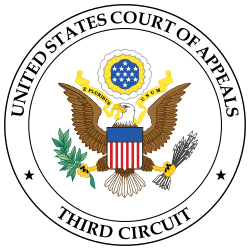American Civil Liberties Union v. Schundler facts for kids
Quick facts for kids American Civil Liberties Union of New Jersey v. Schundler |
|
|---|---|
 |
|
| Court | United States Court of Appeals for the Third Circuit |
| Full case name | The American Civil Liberties Union of New Jersey, on behalf of its members, Robert Lander, Adam Jacobs, Joel Solow and Ann Sorrel v. Bret Schundler, in his official capacity as Mayor of the City of Jersey City, New Jersey; The City Council of Jersey City, New Jersey; City of Jersey City, New Jersey |
| Argued | August 6, 1998 |
| Decided | February 16, 1999 |
| Citation(s) | 168 F.3d 92 |
| Case history | |
| Prior history | Injunction granted, 931 F. Supp. 1180 (D.N.J. 1995); affirmed, 104 F.3d 1997 (1997). |
| Subsequent history | Cert. denied, 520 U.S. 1265 (June 9, 1997) |
| Court membership | |
| Judge(s) sitting | Richard Lowell Nygaard, Samuel Alito, Marjorie O. Rendell |
| Case opinions | |
| Majority | Alito, joined by Rendell |
| Dissent | Nygaard |
| Laws applied | |
| U.S. Const. amend. I | |
American Civil Liberties Union of New Jersey v. Schundler was a United States federal court case from 1999. It helped set rules for when government-sponsored holiday displays can include religious symbols. The case was decided by the United States Court of Appeals for the Third Circuit, which is a high court in the U.S. legal system.
Understanding the Case: Holiday Displays and the Law
This case was about whether a city could put up holiday decorations that included religious symbols on public property. The main question was if these displays went against the First Amendment of the U.S. Constitution.
What Happened: Jersey City's Holiday Display
During the holiday season, Jersey City, New Jersey put up a display in front of its City Hall. This display included a nativity scene (showing Mary, Joseph, Baby Jesus, and the Three Wisemen), a Christmas tree, and a menorah.
The American Civil Liberties Union (ACLU) is a group that works to protect people's rights. They asked Jersey City to stop putting religious symbols on public land. The ACLU believed this was against the First Amendment. Specifically, they pointed to the Establishment Clause. This part of the First Amendment says that the government cannot create or favor any religion.
Jersey City then added a sign next to the display. The sign said the city was celebrating the "diverse cultural and ethnic heritages of its peoples." However, the ACLU still filed a lawsuit.
A lower court, the Federal District Court of New Jersey, first told the city to stop its holiday display. Jersey City disagreed and decided to appeal this ruling.
After this, Jersey City changed its display. They kept the menorah, Christmas tree, and nativity scene. But they also added Santa Claus, Frosty the Snowman, a sled, and Kwanzaa symbols on the tree. They also put up two new signs. The ACLU then argued that even this changed display was still against the law.
The Court's Decision: What the Judges Said
The case eventually went to the United States Court of Appeals for the Third Circuit. The main opinion for the court was written by Judge Samuel Alito.
The court used a special test called the "Lemon test" to decide if the display was legal. This test asks three main questions:
- Did the government's action have a non-religious purpose?
- Did it mainly help or hurt religion?
- Did it mix the government too much with religion?
The court also looked at two important past cases from the Supreme Court: Lynch v. Donnelly and County of Allegheny v. ACLU.
The judges decided that Jersey City's modified display was similar to displays that the Supreme Court had already said were okay. They felt that the display did not show that the government was favoring Christianity, Judaism, or religion in general. Instead, the court said the display sent a message of "pluralism." This means it showed that many different beliefs and cultures are welcome and that people have the freedom to choose their own beliefs.
In the end, the court decided that the modified holiday display did not violate the First Amendment.

